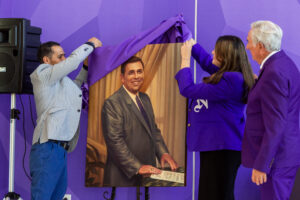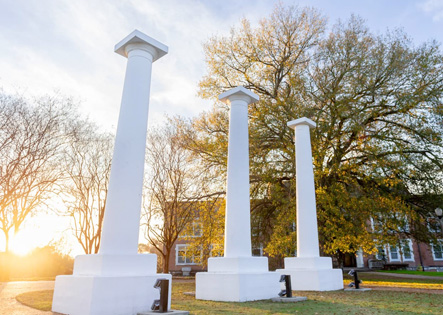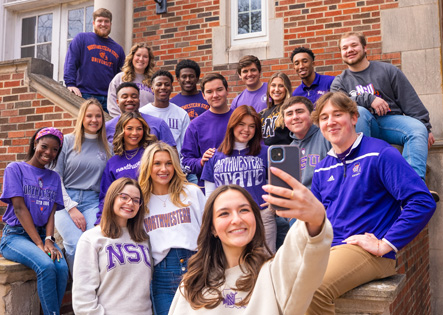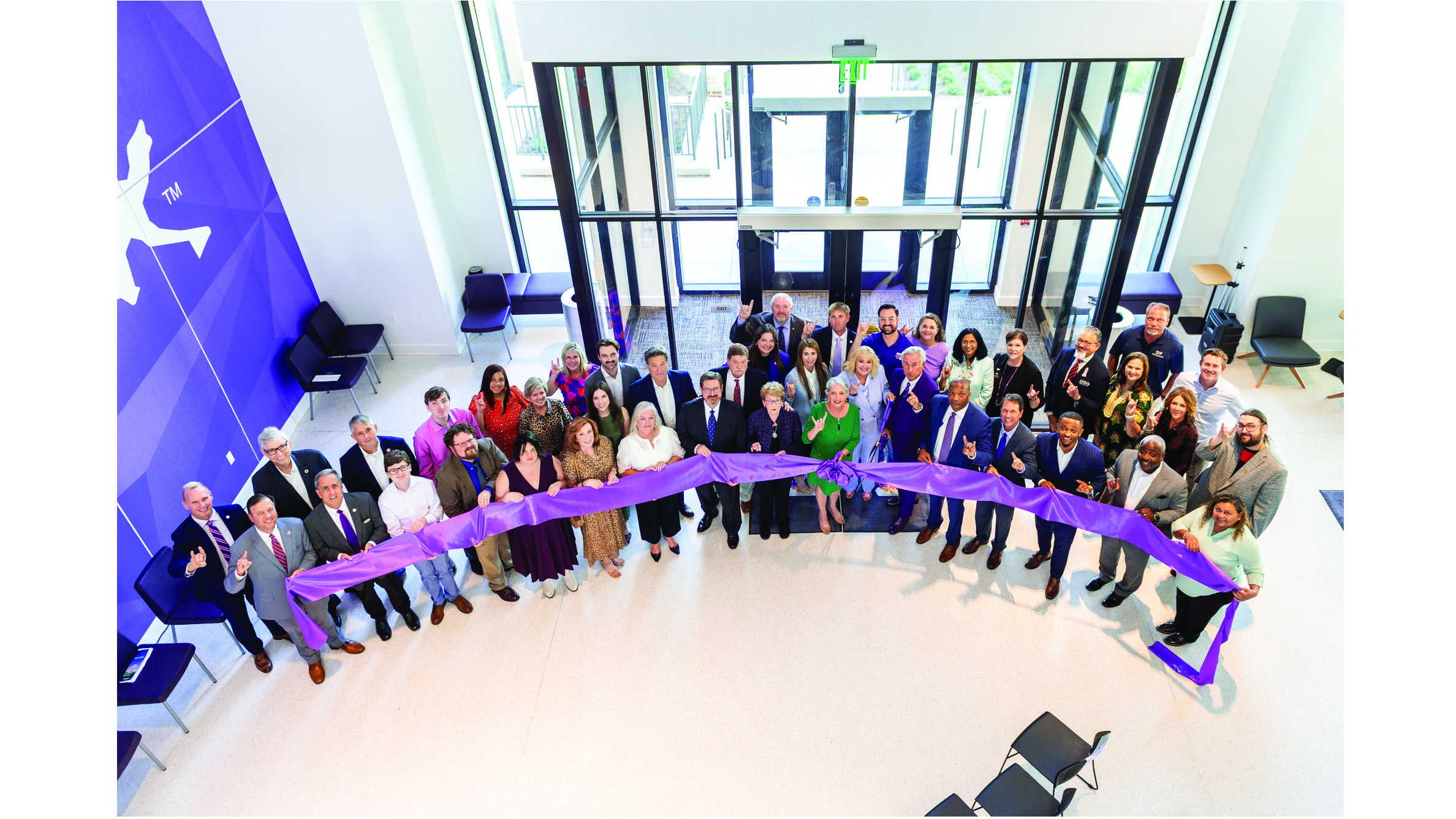NATCHITOCHES – Northwestern State University and President James Genovese hosted a ribbon-cutting ceremony Oct. 3 in the atrium of Robert Alost Hall, the 73,200-square-foot academic building that opened this semester.
Administrators from NSU and the University of Louisiana System, the Alost family, former presidents, faculty, staff, students, alumni, public servants and legislative partners were on hand for the ribbon-cutting that was scheduled as part of Homecoming festivities.
The state-of-the-art building “will transform how we teach, learn and conduct research,” said Dr. Greg Handel, provost and executive vice president.
Wes Alost, son of Robert Alost, expressed appreciation on behalf of his mother Alma and the Alost family to those who made the project a reality.
“Pop would be so proud that a building devoted to learning bears his name,” Wes Alost said. “As everyone knows, he devoted his career and his life to education and teaching. Pop and Mom devoted their lives to Northwestern through times when it would have been much easier to turn their backs and seek greener pastures elsewhere. We also know that Pop could not have accomplished what he did without the tenacious support and hard work of countless individuals. Pop never stopped coaching even when there was no longer a game.”
Genovese acknowledged with thanks NSU’s partnership with AQ Studios, DonahueFavret Contractors and Perkins&Will architecture firm in completing the project on schedule, and the persistence of numerous individuals who worked to carry the project forward. That includes former presidents Dr. Marcus Jones and Dr. Chris Maggio, Jen Kelly, executive director for University Affairs, and numerous individuals in Facility Services, as well as the president’s Leadership Team and the late Jerry Pierce, the late Lola Dunahoe, who were strong advocates of the project.

Artist and associate professor Edgar Cano Lopez, SGA President Madysen Morgan and NSU President James Genovese unveiled a portrait of Dr. Robert Alost as part of the SGA Portrait Project that ensures that buildings named after individuals feature a portrait of the person honored.
As part of the opening, NSU Student Government Association President Madysen Morgan of Bossier City unveiled a portrait of Alost by artist Edgar Cano-Lopez, a member of the Fine and Graphic Arts faculty. The SGA Portrait Project ensures that buildings and prominent spaces named after individuals feature a portrait of that person.
Construction on the $45 million project began in March 2023. Looming over Sam Sibley Drive in the heart of campus, Alost Hall features large multipurpose and multifunctional classrooms, simulation labs for nursing and anesthesia programs, a social work/psychology clinic and training area, a café, a dozen 30-person classrooms, two 40-person classrooms and three 50-person classrooms. The building houses 60 faculty offices and an administrative suite for deans, department heads and administrative assistants, a large conference room and reception area. There are also seating areas inside and outside the building for students between classes.
Alost Hall is situated at the former site of Caddo Hall, a 1960s residential facility that was razed in preparation for the new building. Alost Hall replaces John S. Kyser Hall, constructed in 1968, as the university’s main academic building.
Dr. Robert Alost was president of Northwestern State from 1986-1996. Alost graduated from NSU in 1957 and commissioned as an artillery officer in the U.S. Army through NSU’s ROTC program. He earned a master’s degree at NSU in 1958 and entered active duty, serving two years and earning the rank of Captain.
Before becoming president of NSU, Alost served NSU as a faculty member, department head and dean. He was also co-founder of the Louisiana School for Math, Science and the Arts and director of the school from 1982 to 1986. During his presidency at NSU, Alost led the university to an unprecedented period of growth when enrollment at Northwestern State increased from 5,272 to more than 9,000. That substantial increase laid the foundation for progress in academic achievement, athletic success, facility enhancements and other accomplishments that provided ongoing stability for the university after a period of declining enrollment and fiscal uncertainty. He died 2020 at age 85.





